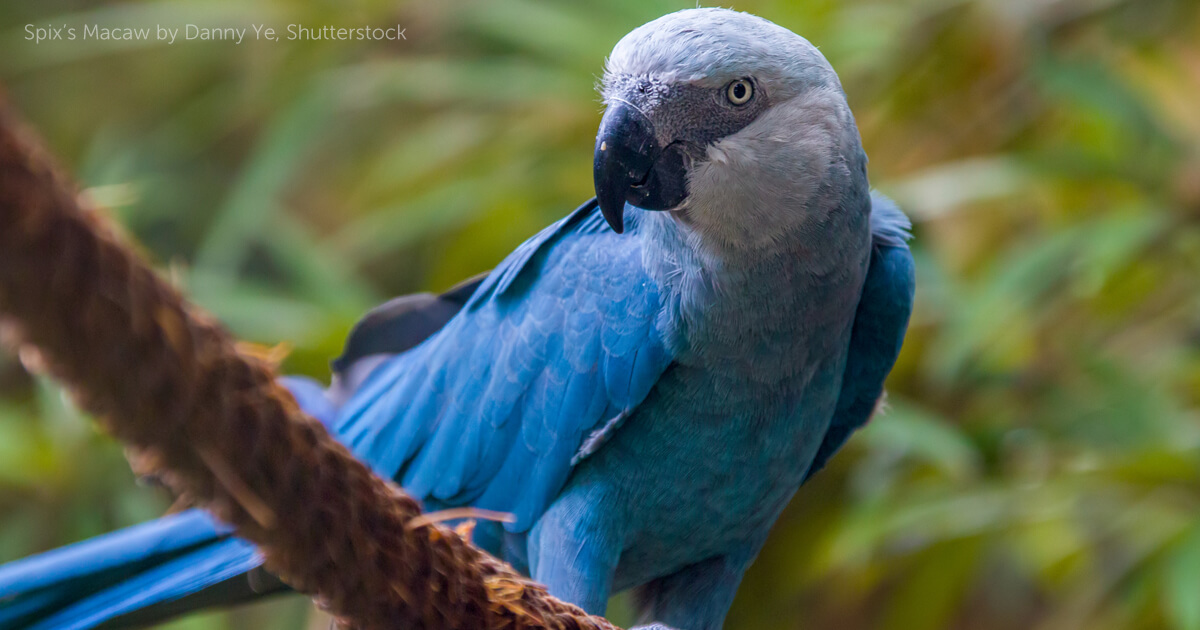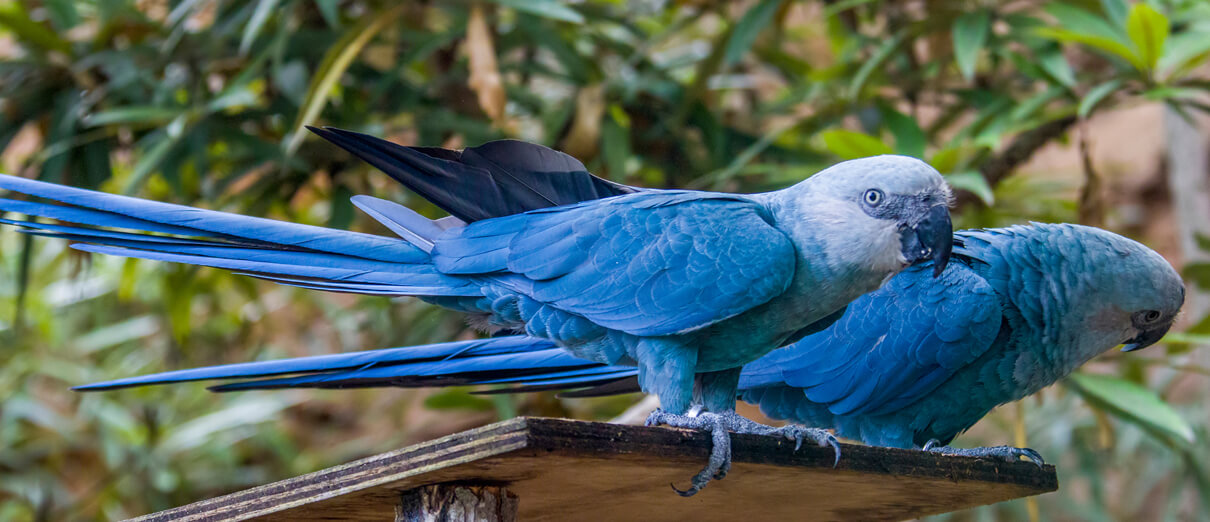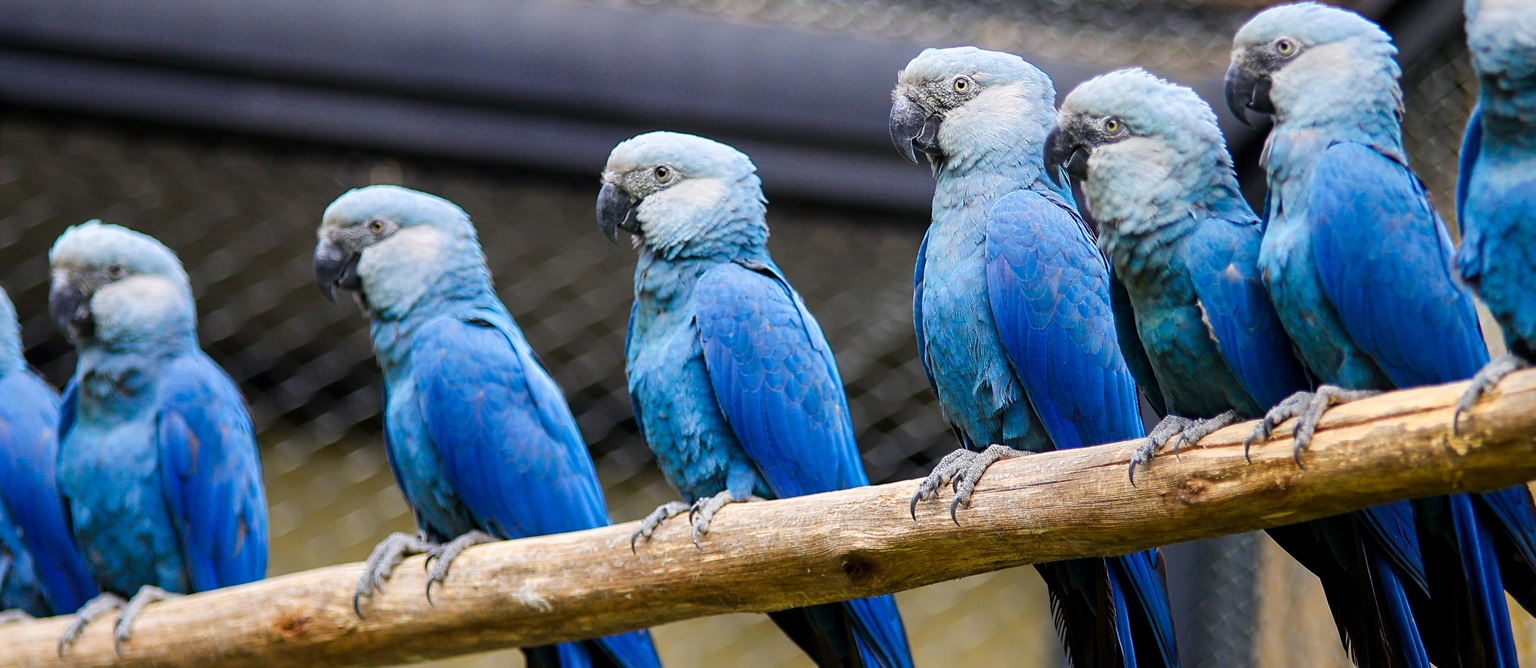
Spix’s Macaw (Cyanopsitta spixii), also known as the Little Blue Macaw, is a small, strikingly blue parrot native to Brazil. Here’s an overview of the species:
🐦 Basic Facts
- Scientific Name: Cyanopsitta spixii
- Common Name: Spix’s Macaw / Little Blue Macaw
- Family: Psittacidae (True parrots)
- Conservation Status: Critically Endangered (once declared extinct in the wild)
- Lifespan: Up to 28–40 years in captivity
🌍 Habitat & Range
- Original Habitat: Dry gallery forests along the Rio São Francisco in northeastern Brazil, especially in the Caatinga biome.
- Spix’s Macaw was extremely habitat-specific, relying heavily on the caraibeira tree (Tabebuia aurea) for nesting and feeding.
🍽️ Diet
- Seeds, fruits, nuts, and other plant matter.
- Known to forage in small groups or pairs.
🧬 Appearance
- Color: Predominantly pale blue to turquoise.
- Size: Around 55–57 cm (22 inches) long.
- Tail: Long and pointed.
- Bill: Dark grey to black, strong and curved.
❗ Conservation and Status
- The species went extinct in the wild by the early 2000s due to habitat loss, trapping for the pet trade, and limited range.
- As of the 2010s–2020s, reintroduction efforts have been underway, thanks to breeding programs in captivity.
- A major conservation success came in 2018–2020, when Spix’s Macaws were reintroduced into the wild in their native Brazilian habitat.
🌱 Conservation Programs
- ACTP (Association for the Conservation of Threatened Parrots) and ICMBio in Brazil have played key roles in breeding and reintroduction.
- Over 180 individuals now exist in captivity worldwide, with a growing number successfully released back into the wild.




Here are some beautiful images of Spix’s Macaw (Cyanopsitta spixii) from conservation settings and wild-care programs. These photos showcase their vibrant blue plumage, grey-blue heads, and slender build.
📸 About the Photos
- You’re looking at specimens in breeding centres like ACTP in Germany and rehabilitation facilities in Brazil. These facilities are instrumental in conservation and reintroduction efforts gettyimages.com+13abcbirds.org+13en.wikipedia.org+13en.wikipedia.org+7gettyimages.com+7alamy.com+7.
- Recent images from news sources highlight macaws perched or interacting in facilities near their native habitat in Bahia, Brazil .
✅ If you’d like more:
- I can find images of wild or recently released individuals in Brazil.
- I can show historical illustrations or early photos from type specimens.
- I can provide more details on the context of each photo (e.g., location, photographer, date).